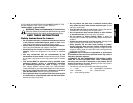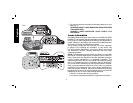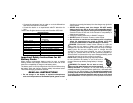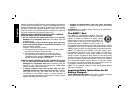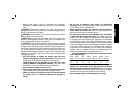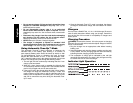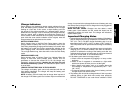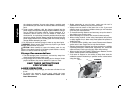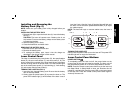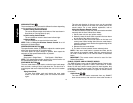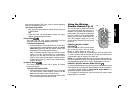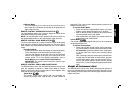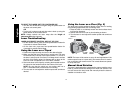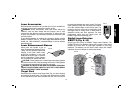
English
8
the charging procedure. You may also charge a partially used
pack whenever you desire with no adverse affect on the battery
pack.
5. Under certain conditions, with the charger plugged into the
power supply, the exposed charging contacts inside the charger
can be shorted by foreign material. Foreign materials of a
conductive nature such as, but not limited to, steel wool,
aluminum foil, or any buildup of metallic particles should be kept
away from charger cavities. Always unplug the charger from the
power supply when there is no battery pack in the cavity. Unplug
charger before attempting to clean.
6. Do not freeze or immerse charger in water or any other liquid.
WARNING: Shock hazard. Don’t allow any liquid to get inside
charger. Electric shock may result.
CAUTION: Never attempt to open the battery pack for any
reason. If the plastic housing of the battery pack breaks or cracks,
return to a service center for recycling.
Storage Recommendations
1. The best storage place is one that is cool and dry away from
direct sunlight and excess heat or cold.
2. Long storage will not harm the battery pack or charger. Under
proper conditions, they can be stored for 5 years or more.
SAVE THESE INSTRUCTIONS
FOR FUTURE USE
LASER OPERATION
• To extend battery life per charge, turn the laser off when it is not
in use.
• To ensure the accuracy of your work, check the laser
calibration often. Refer to Field Calibration Check under
Laser Maintenance.
• Before attempting to use the laser, make sure the tool is
positioned on a relatively smooth, secure surface.
• Always mark the center of the laser line or dot. If you mark
different parts of the beam at different times you will introduce
error into your measurements.
• To increase working distance and accuracy, set up the laser in
the middle of your working area.
• When attaching to a tripod or wall, mount the laser securely.
• When working indoors, a slow rotary head speed will produce
a visibly brighter line, a faster rotary head speed will produce a
visibly solid line.
• To increase beam visibility, wear Laser Enhancement Glass es
and/or use a Laser Target Card to help find the beam.
• Extreme temperature changes can cause movement or shifting
of building structures, metal tripods, equipment, etc., which can
effect accuracy. Check your accuracy often while working.
• When working with the D
EWALT Digital Laser Detector, set the
laser’s rotation speed to the fastest setting.
• If the laser is dropped or has suffers a sharp blow, have the
calibration system checked by a qualified service center before
using the laser.
A
C
B
FIG. 2




